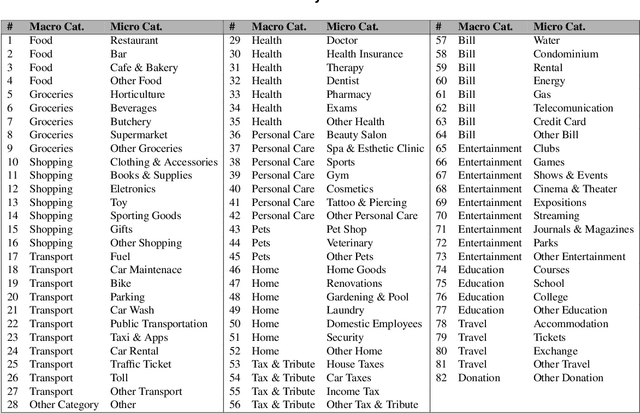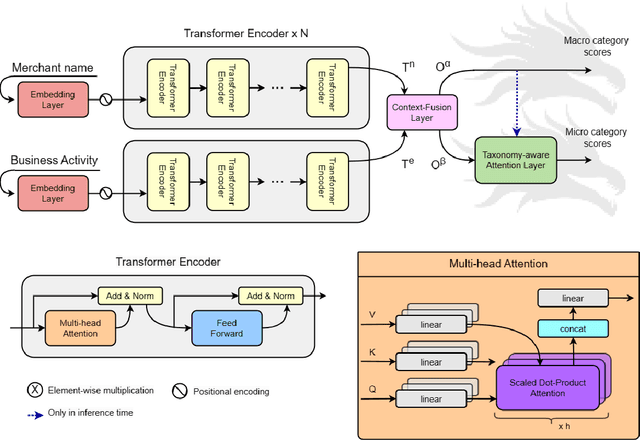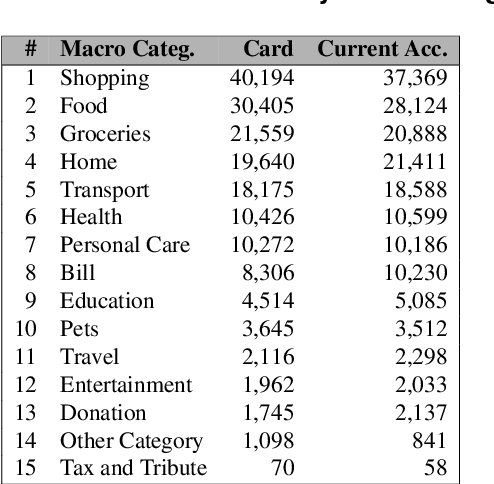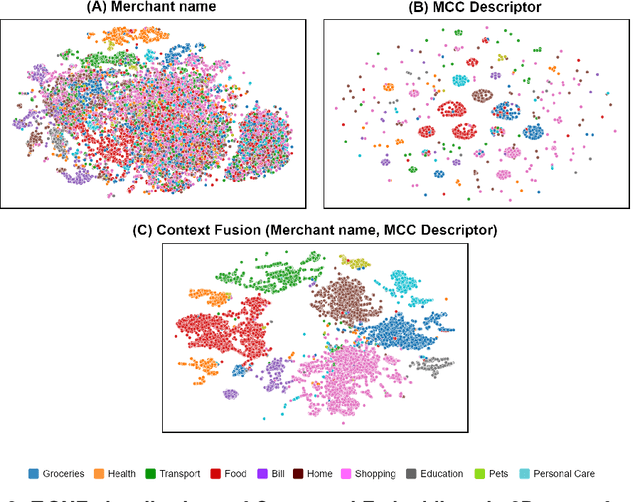Rafael Rocha
Hierarchical Classification of Financial Transactions Through Context-Fusion of Transformer-based Embeddings and Taxonomy-aware Attention Layer
Dec 12, 2023



Abstract:This work proposes the Two-headed DragoNet, a Transformer-based model for hierarchical multi-label classification of financial transactions. Our model is based on a stack of Transformers encoder layers that generate contextual embeddings from two short textual descriptors (merchant name and business activity), followed by a Context Fusion layer and two output heads that classify transactions according to a hierarchical two-level taxonomy (macro and micro categories). Finally, our proposed Taxonomy-aware Attention Layer corrects predictions that break categorical hierarchy rules defined in the given taxonomy. Our proposal outperforms classical machine learning methods in experiments of macro-category classification by achieving an F1-score of 93\% on a card dataset and 95% on a current account dataset.
Can large language models democratize access to dual-use biotechnology?
Jun 06, 2023Abstract:Large language models (LLMs) such as those embedded in 'chatbots' are accelerating and democratizing research by providing comprehensible information and expertise from many different fields. However, these models may also confer easy access to dual-use technologies capable of inflicting great harm. To evaluate this risk, the 'Safeguarding the Future' course at MIT tasked non-scientist students with investigating whether LLM chatbots could be prompted to assist non-experts in causing a pandemic. In one hour, the chatbots suggested four potential pandemic pathogens, explained how they can be generated from synthetic DNA using reverse genetics, supplied the names of DNA synthesis companies unlikely to screen orders, identified detailed protocols and how to troubleshoot them, and recommended that anyone lacking the skills to perform reverse genetics engage a core facility or contract research organization. Collectively, these results suggest that LLMs will make pandemic-class agents widely accessible as soon as they are credibly identified, even to people with little or no laboratory training. Promising nonproliferation measures include pre-release evaluations of LLMs by third parties, curating training datasets to remove harmful concepts, and verifiably screening all DNA generated by synthesis providers or used by contract research organizations and robotic cloud laboratories to engineer organisms or viruses.
 Add to Chrome
Add to Chrome Add to Firefox
Add to Firefox Add to Edge
Add to Edge